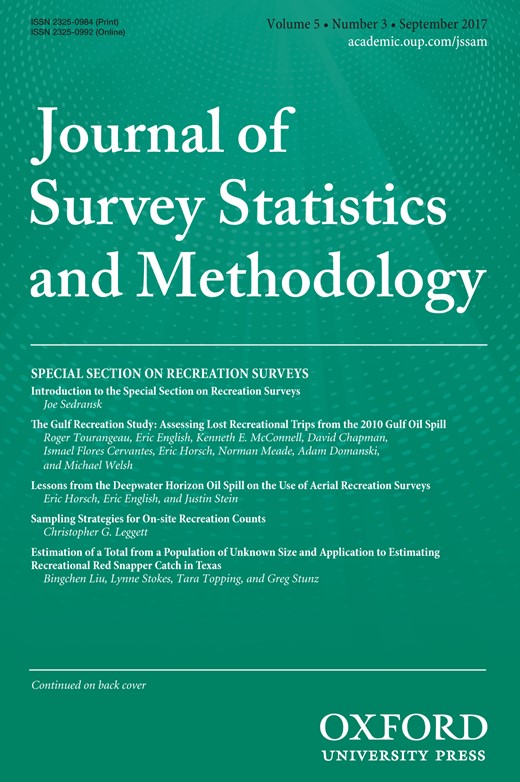-
Views
-
Cite
Cite
Eric Horsch, Eric English, Justin Stein, Lessons from the Deepwater Horizon Oil Spill on the Use of Aerial Recreation Surveys, Journal of Survey Statistics and Methodology, Volume 5, Issue 3, September 2017, Pages 310–325, https://doi.org/10.1093/jssam/smx005
Close - Share Icon Share
Abstract
As part of the natural resource damage assessment conducted by state and federal natural resource trustees, an aerial survey was used to estimate the decline in recreational beach user days due to the April 2010 Deepwater Horizon explosion and resulting oil spill. Over 3 million photographs were taken over three years, covering more than 750 miles of coastline along the Gulf of Mexico. This constitutes one of the largest single data collection efforts ever undertaken to measure outdoor recreation use. Counts of people on the beach were obtained from a sample of the photographs using a combination of visual inspection and automated data processing. Ground interviews supplemented the aerial photographs to estimate the number of recreation user days. Lessons for future work include the development of efficient methods for converting aerial images into counts, an evaluation of the uncertainty in identifying beachgoers in aerial pictures, the use of weighting adjustments to compensate for the potentially uneven distribution of sampling times, methods for the treatment of overflights canceled because of bad weather, and methods for the treatment of missing coverage due to pilot error or other factors.







